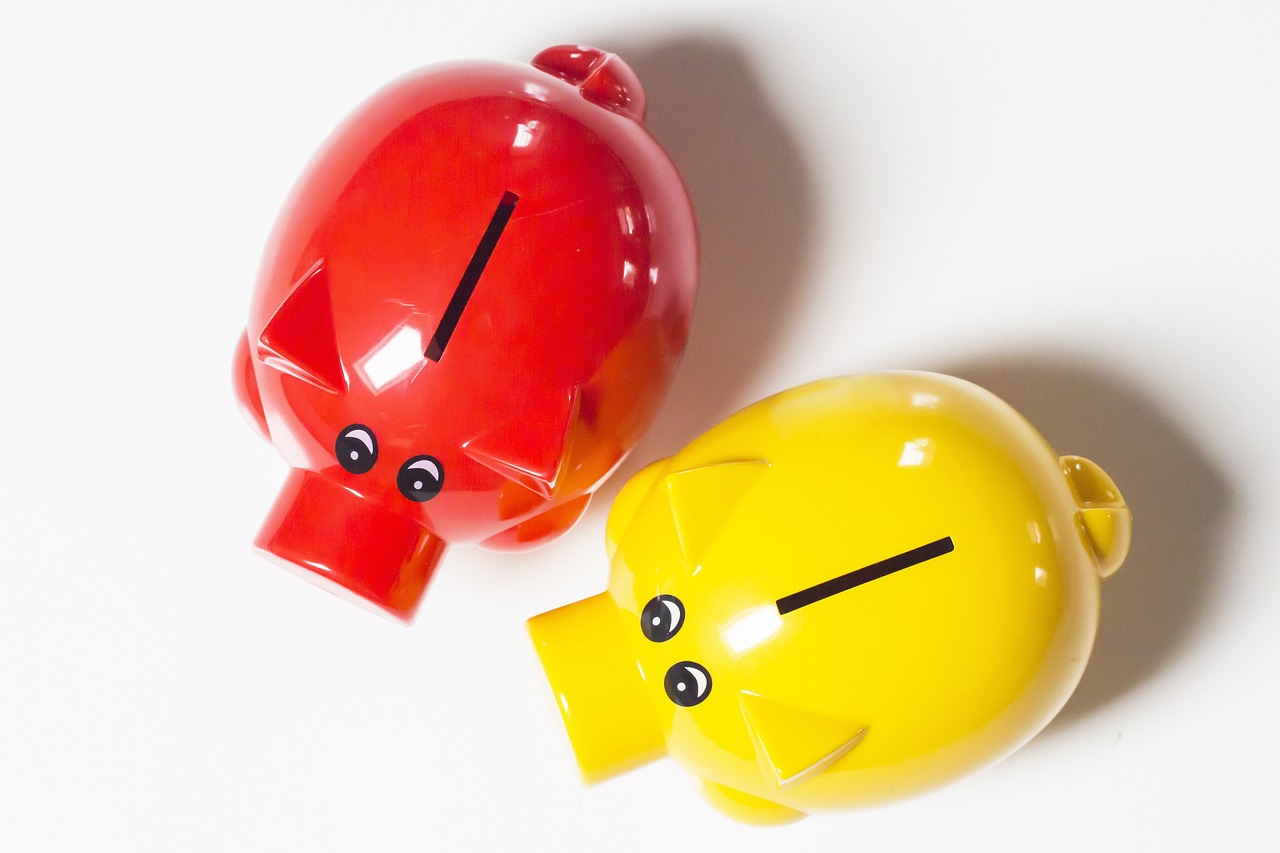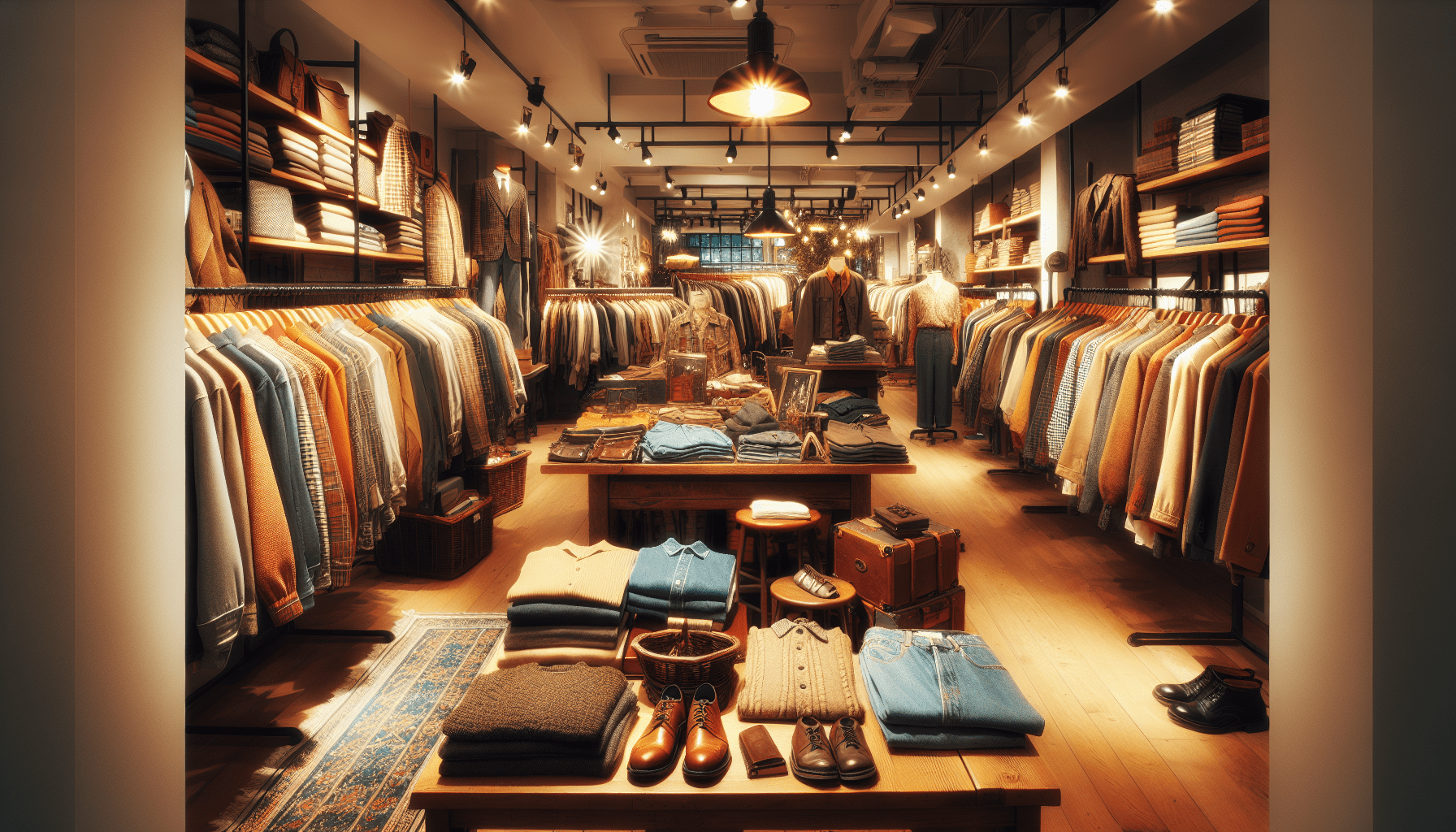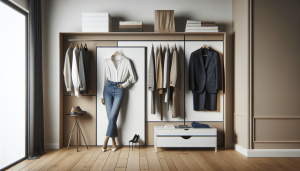Let’s dive into a world where sustainable choices and unique finds go hand in hand. In our exploration of “What Are The Benefits Of Second-hand Shopping?” we’ll discover just how impactful our shopping habits can be on our wallets, our wardrobes, and our planet.
When we choose second-hand shopping, we aren’t just snagging incredible deals and one-of-a-kind treasures; we’re also reducing waste and promoting a circular economy. By giving pre-loved items a second chance, we help conserve resources, minimize the demand for new production, and play an active role in protecting our environment. Plus, we get to express our individuality with unique pieces that tell their own stories. It’s a win-win for us and for the world we live in. Have you ever considered the many benefits of second-hand shopping? More and more of us are turning to thrift stores, consignment shops, and online marketplaces to find unique and affordable items. It’s not just about saving money; it’s about contributing to a more sustainable future, finding high-quality items, and even discovering hidden treasures. Let’s explore the myriad benefits of second-hand shopping together.

What Is Second-hand Shopping?
Second-hand shopping involves purchasing items that have been previously owned and used by someone else. These items can be anything from clothes and furniture to electronics and books. They are typically sold at lower prices than brand-new goods and can be found in thrift stores, consignment shops, garage sales, flea markets, vintage stores, and online platforms like eBay, Poshmark, and Facebook Marketplace.
Types of Second-hand Shopping
There are various outlets where we can engage in second-hand shopping, each offering a unique experience and set of goods.
| Outlet Type | Description |
|---|---|
| Thrift Stores | Non-profit stores like Goodwill and Salvation Army that sell donated items at low prices. |
| Consignment Shops | Stores that sell second-hand items on behalf of the original owner, with a percentage of sales. |
| Vintage Shops | Specialized stores selling high-quality or rare items from past decades. |
| Online Marketplaces | Digital platforms where individuals can buy and sell pre-owned items. |
| Flea Markets | Large outdoor markets with various vendors selling used goods. |
| Garage Sales | Private sales held by individuals looking to sell unwanted items. |
Let’s delve into why these various forms of second-hand shopping are becoming increasingly popular.
Economic Benefits
One of the most apparent advantages of second-hand shopping is the economic benefit. Here’s how buying second-hand can bring financial advantages:
Save Money
Second-hand items are usually sold at a fraction of their original cost. This means we can stretch our dollars further, buying more for less. From designer clothes to high-quality furniture, the savings can be substantial, making it easier to manage our budgets.
Find High-quality Items
Just because something is second-hand doesn’t mean it lacks quality. Often, we can find high-quality brands and well-made items that have stood the test of time. By buying these items second-hand, we are not only saving money but also investing in items that will last longer. This is especially true for vintage pieces where craftsmanship is more evident.
Avoid Depreciation
When we buy new items, they often lose value as soon as we start using them. Buying second-hand allows us to avoid this depreciation, as the previous owner has already absorbed the initial drop in value. This is particularly relevant for items like cars, electronics, and furniture.
Environmental Benefits
Our planet is dealing with a significant amount of waste, and second-hand shopping is a fantastic way to reduce our environmental impact. Here are some of the ways buying second-hand is environmentally friendly:
Reduce Waste
Each year, millions of tons of clothing, furniture, and electronics end up in landfills. By purchasing second-hand, we help to reduce the amount of waste heading to these landfills. Every item we buy second-hand is one less item contributing to environmental pollution.
Conserve Resources
Producing new goods requires a substantial amount of energy and raw materials. When we buy second-hand, we reduce the demand for new products, conserving the resources and energy needed to produce them. This can include water, oil, metals, and more, which are often depleted in the manufacturing process.
Minimize Carbon Footprint
The manufacture and transportation of new items contribute significantly to greenhouse gas emissions. By choosing second-hand items, we decrease the demand for new goods, thereby reducing the associated carbon emissions. This way, each purchase helps in battling climate change.
Promote Recycling and Upcycling
Second-hand shopping encourages a culture of recycling and upcycling. By giving items a second life, we actively contribute to a circular economy where products are reused and repurposed instead of being discarded. This can lead to creative projects and new functions for old items.
Social Benefits
Second-hand shopping also brings a host of social advantages that positively impact our communities and personal lives:
Support Charities
Many thrift stores are run by non-profit organizations, and the money we spend there often goes towards supporting social causes such as job training programs, shelters, and community services. Every purchase we make can help make a difference in someone else’s life.
Foster Community Connections
Shopping second-hand can bring us closer to our communities. Local thrift stores, garage sales, and flea markets provide opportunities to meet new people and foster a sense of community. We can share stories, advice, and enjoy the satisfaction of helping others by supporting local businesses and community events.
Encourage Conscious Consumption
When we choose to buy second-hand, we become more thoughtful about our consumption habits. We start to question the necessity of new items and appreciate the value of older, well-crafted goods. This conscious consumption habit can lead to more mindful and sustainable living choices in other areas of our lives as well.
Unique and Diverse Selection
Second-hand stores often offer a wide variety of items that may not be found in traditional retail stores. This allows us to express our individuality and creativity through unique and diverse choices that stand out from the mass-produced items available in big-box stores.

Personal Benefits
Beyond economic, environmental, and social advantages, second-hand shopping also offers personal benefits that enhance our lives in meaningful ways:
Discover Hidden Treasures
One of the most exciting aspects of second-hand shopping is the thrill of the hunt. We never know what treasures we might find, from vintage clothing and rare books to retro electronics and antique furniture. Each shopping trip becomes an adventure, filled with the potential for unique discoveries.
Build a Unique Wardrobe
Second-hand shopping allows us to add unique pieces to our wardrobe that we won’t find in mainstream stores. We can create a style that is distinctly ours, mixing and matching vintage finds with contemporary pieces. This individuality extends to other areas of our lives, like home decor and personal accessories.
Gain a Sense of Accomplishment
There’s a sense of satisfaction that comes with finding a great deal or a unique item. Knowing that we have made a smart, sustainable, and wallet-friendly purchase can give us a feeling of accomplishment. It boosts our confidence, making second-hand shopping a rewarding experience.
Support Small Businesses
Many second-hand shops are independently owned, and by shopping there, we contribute to the livelihood of small business owners and local economies. Our purchases help them thrive and continue providing valuable services to our communities.
Tips for Successful Second-hand Shopping
To make the most of our second-hand shopping experiences, here are some practical tips:
Be Patient and Persistent
Finding the perfect item can take time. It’s essential to be patient and visit multiple stores or check listings frequently. Persistence pays off in finding the best deals and most unique items.
Check for Quality
Examine items carefully for any signs of wear and tear. Check seams, zippers, and buttons on clothing, and inspect furniture for sturdy construction. Ensuring good quality means our finds will have a longer life.
Know Your Sizes and Measurements
When shopping for clothes or furniture, it’s helpful to know our exact sizes and the measurements of the space where an item will go. This prevents us from purchasing items that don’t fit properly, making our shopping experience more efficient.
Don’t Hesitate to Haggle
In many second-hand shops and markets, prices aren’t set in stone. We shouldn’t be afraid to negotiate for a better deal. Polite haggling can often lead to significant savings.
Keep an Open Mind
Sometimes, items may need a bit of cleaning or minor repairs. Keeping an open mind about the potential of items can lead to fantastic finds that we might otherwise overlook. A little creativity and effort can go a long way in transforming second-hand items.

The Future of Second-hand Shopping
The future of second-hand shopping looks promising as more of us become aware of its benefits. Here are some trends that indicate where second-hand shopping is headed:
Rise of Online Marketplaces
Online platforms like eBay, Poshmark, and ThredUp are making it easier than ever to buy and sell second-hand items. These marketplaces offer convenience, broader selections, and detailed search options, allowing us to find exactly what we’re looking for from the comfort of our homes.
Sustainability Movement
As the sustainability movement gains momentum, second-hand shopping is becoming a mainstream choice. More businesses and consumers are recognizing the importance of reducing waste and conserving resources, making second-hand shopping an integral part of a sustainable lifestyle.
Fashion Industry’s Shift
The fashion industry is beginning to embrace second-hand fashion. Brands are starting to offer resale and trade-in programs, acknowledging the growing demand for sustainable and affordable fashion options. This shift is making it easier for us to access high-quality second-hand clothing.
Technological Advancements
Technology is enhancing the second-hand shopping experience. From AI-driven recommendation systems to virtual try-on features, advancements in technology are making second-hand shopping more accessible and enjoyable. These technologies help us discover items that match our preferences and fit seamlessly into our lives.
Conclusion
Second-hand shopping offers a multitude of benefits that go beyond just saving money. It supports our financial health, protects the environment, fosters community connections, and provides personal satisfaction. Whether we’re looking to be more sustainable, find unique items, or support local businesses, second-hand shopping presents an excellent opportunity to do so.
By embracing second-hand shopping, we make a positive impact on our planet and our communities. The thrill of discovering hidden treasures, the joy of finding high-quality items, and the satisfaction of contributing to a greener future make second-hand shopping a truly enriching experience.
So, next time we’re considering a purchase, let’s remember the many advantages of second-hand shopping and make a choice that benefits not just us, but everyone around us. Happy thrifting!




